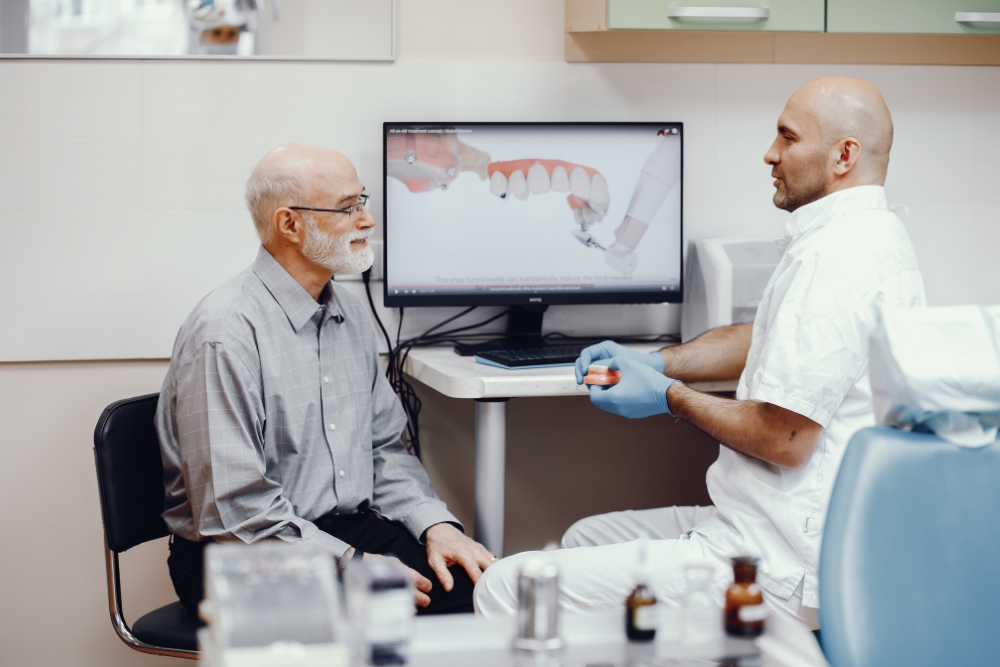Dental implant services have revolutionized the field of dentistry, offering a durable and aesthetically pleasing solution for missing teeth. In this article, we’ll demystify the process of dental implant services, providing a comprehensive guide from a professional dental implant specialist in Troy.
Understanding Dental Implants
Dental implants are artificial tooth roots, typically serving as a prosthetic tooth, such as a crown, bridge, or denture, that are surgically placed into the jawbone beneath the gums. Once in place, they allow dentists to mount replacement teeth onto them taking the place of one or more missing teeth. They are popular because they provide strong support for new teeth and are the closest one can get to natural, healthy teeth.
The Initial Consultation
The journey to dental implant services begins with an initial consultation. During this session, the dentist conducts a thorough dental examination, which may include dental X-rays and 3D images, and discusses the patient’s medical history.
This step is crucial to ascertain the patient’s eligibility for dental implants, considering factors like jawbone density and overall oral health. Also, dental implants are typically made of titanium. Hence, checking the favorability of the patient becomes very crucial.
Treatment Planning
Once the dentist determines that the patient is a good candidate for implants, a personalized treatment plan is devised. This plan considers factors like the number of teeth to be replaced and the condition of the patient’s jawbone.
Often, a multidisciplinary approach involving periodontists, oral surgeons, and prosthodontists is adopted to ensure comprehensive care.
The Dental Implant Procedure
- Preparation of the Jawbone
In cases where the jawbone is too thin or soft to hold the implant, bone grafting may be necessary. This process involves taking a piece of bone from another part of the body or using a special bone grafting material to build up the jawbone. The grafting process requires several months to heal before the implant can be placed.
- Placement of the Implant
During this surgical procedure, the dentist places the implant post into the jawbone where the new tooth will be. This procedure serves as a replacement for the tooth root. After placement, a period of healing (osseointegration) begins, allowing the implant to integrate securely with the jawbone. This process can take several months.
- Abutment Placement
Once the implant bonds with the jawbone, a small connector post called an abutment is attached to the post to securely hold the new tooth. The abutment and implant may be inserted simultaneously in certain circumstances.
- Choosing the New Artificial Teeth
After the gums heal, impressions of the mouth and remaining teeth are made. These impressions are used to make the crown — the artificial tooth. The crown is designed to blend in with your natural teeth in color, size, and shape.
- Attachment of the Crown
Finally, the crown is attached to the abutment. A removable denture may be supported and retained by attachments that are affixed to some patients’ implants. The prosthetics can only be carried out by a dental implant specialist.
Aftercare and Recovery
After the placement of dental implants, it’s normal to experience some discomfort, such as swelling, bruising, minor bleeding, and pain. The majority of patients do, however, say that the discomfort is only mild.
Proper aftercare is vital for the success of the implant. This includes good oral hygiene practices like brushing and flossing, avoiding hard and chewy foods initially, and regular dental check-ups.
Potential Risks and Complications
Dental implant surgery has certain health hazards, just like any other surgical operation. These risks are rare, but they can include infection at the implant site, damage to surrounding structures such as other teeth or blood vessels, nerve damage, and sinus problems.
At Troy Dental Studio, dental implant services are carried out by skilled, knowledgeable, and experienced dentists, reducing the potential risks and complications. However, it is essential to discuss these risks with the dentist before the procedure.
Long-term Care and Maintenance
The same hygiene practices that are used for natural teeth also apply to dental implants: brushing, flossing, mouthwash containing antimicrobial agents, and routine dental examinations. With proper care, dental implants can last a lifetime.
Conclusion
Dental implant services offer a highly effective and long-lasting solution for replacing missing teeth. The process, though intricate, provides results that are both functional and aesthetically pleasing. By understanding the steps involved and committing to proper aftercare, patients can enjoy the full benefits of this advanced dental technology.
As an Ivy-League-trained Cosmetic Dentistry Office in Troy, we stay connected with you in every step of the dental implants journey. We provide a full-fledged dental implant services to ensure our patients have a true concierge experience without having to move between different offices, and that makes us unique as we have all the dental specialties (General, Cosmetic, Oral, Endo) located at Troy Dental Studio.
Take the first step of the restorative journey of your teeth with dental implants by booking a consultation with our dental office at (248) 362-1100.



